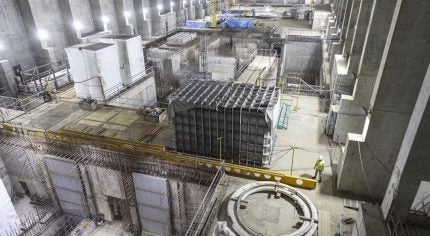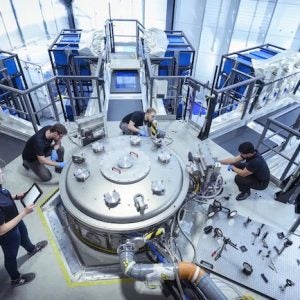
Specialists from the fuel technology department of the Scientific Research Institute of Atomic Reactors (NIIAR – Nauchno Issledovatelskii Institut Atomnikh Reaktorov) in Dimitrovgrad have produced a pilot batch of fuel elements with vibro-packed uranium-plutonium mixed oxide (mox) fuel for the multi-purpose fast research reactor MBIR (Mnogotselevoi Bistrii Issledovatelskii Reaktor). The work was carried out under the framework of the comprehensive programme Development of equipment, technologies and scientific research in the field of use of atomic energy in the Russian Federation.
“For the first time, a pilot batch of fuel rods of a new design has been manufactured. These fuel elements will be part of the standard fuel assemblies used in the core of the MBIR reactor being built at the institute’s site. This fuel element design ensures a high neutron flux density in the core, which makes MBIR the most attractive device for conducting reactor experiments,” said Alexander Svyatkin, head of the fuel technology department at NIIAR).
The products have successfully passed a cycle of preliminary and acceptance tests for compliance with technological and design documentation. A special Rosatom commission oversaw quality control with the participation of representatives of the AI Leipunsky Institute of Physics & Power Engineering (scientific director of the project); NA Dollezhal Scientific Research and Design Institute of Power Engineering (NIKIET – chief designer); Machine-Building Plant Mashinostroitelny Zavod (MSZ- component manufacturer); and NIIAR. The set of documents was assigned the letter “O1”.
The 150MWt multi-purpose sodium-cooled fast neutron MBIR reactor will be the world’s largest facility of its kind. It is expected to provide the nuclear industry with a modern and technologically advanced research infrastructure for the coming 50 years. Its unique technical characteristics will make it possible to solve a wide range of research problems to support the development new competitive and safe NPPs, including fast reactors based on closing the nuclear fuel cycle. Research time needed at the new reactor will be several times less in comparison with the currently operating installations.
Rosatom says the construction of MBIR is the most important project for the long-term development of the experimental base of Russia’s domestic nuclear industry, “which will ensure Russia’s leadership in the development of innovative reactor technologies for the next half century”.
MBIR will be the basis of an international research centre (ICC MBIR). It will replace the BOR-60 experimental fast reactor that has been in operation at NIIAR since 1969. BOR-60 is due to close in 2025. MBIR will be used for materials testing for Generation IV fast neutron reactors. It will be capable of testing lead, lead-bismuth and gas coolants and will enable reactor and post-reactor experiments, perfecting technologies for the production of isotopes and modified materials.






